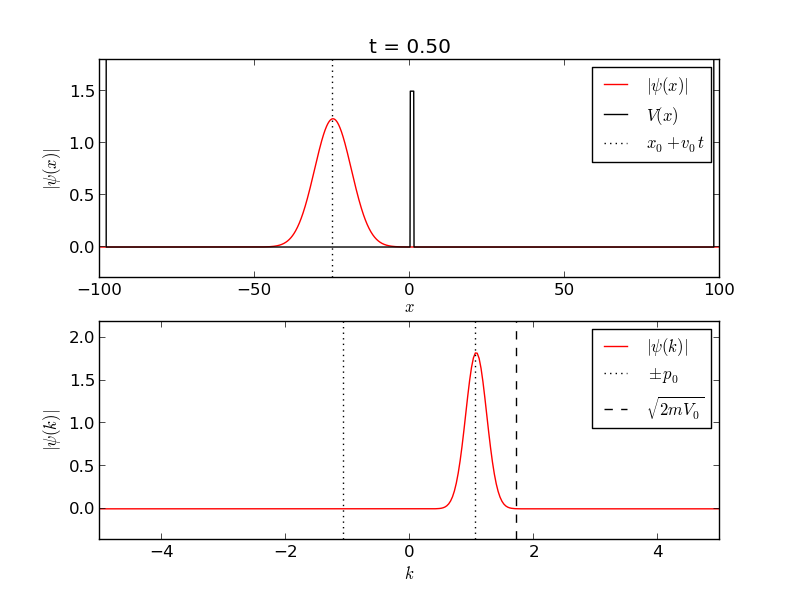

- #1d schrodinger equation full
- #1d schrodinger equation software
- #1d schrodinger equation code
- #1d schrodinger equation free
To use these tools in the classroom, we first advise that instructors take advantage of the IPython notebooks provided for the seven cases addressed in the Schrodinger.py program. It is also important to note that students and instructors have the option to plot wave functions or the probability density at the conclusion of each calculation.

(13) The program then plots the results (e.g., Figure 1) for students to interpret and answer several fundamental questions in each case.
#1d schrodinger equation software
SciPy is a Python-based ecosystem of open-source software for mathematics, science, and engineering. Next, the Hamiltonian is calculated, and SciPy’s built in “eigh” function is utilized to determine the eigenvectors (wave functions) and eigenvalues (energies).

With this in mind, users are also prompted to enter the length, depth, and distance between potential energy wells in atomic units, recalling that 1 Å = 1.89 au. It is also important to note that the mass of the particle and ℏ are set equal to 1 in all cases for the sake of calculating energies in atomic units (au). In eq 2, h is some small number and represents a change in x.
#1d schrodinger equation full
Together, instructors’ use of the IPython notebooks coupled with the students’ use of the full Schrodinger.py program will allow undergraduates to numerically solve Schrödinger’s equation and graphically visualize the wave functions and their energies.Īfter prompting the user for several inputs (length of the potential energy well, depth of the potential energy well, and distance between potential energy wells), the program then utilizes a three-point-finite-difference method, (12) (2)to construct a matrix representation of the Laplacian differential operator. In addition, we have also provided an example assignment and pre/post-assignment survey questions to study the project’s impact on student learning.

In the subsequent sections, we outline a pedagogical framework for utilizing the IPython notebooks in the classroom.
#1d schrodinger equation code
Utilizing the IPython notebooks, instructors have the ability to teach theory and code components from a single resource rather than juggling lecture notes and a separate window for running their code. Most notably, we have utilized the IPython notebook feature of the Python programming environment, providing a novel approach to teaching Schrödinger’s equation in the physical chemistry classroom. Moreover, our goal is that others will incorporate this tool in their physical chemistry classrooms, and therefore, we have provided several tools to aid in accomplishing this. High-resolution graphical output is also provided for data analysis and inclusion in written reports.
#1d schrodinger equation free
The Schrödinger program is coded in Python, (11) a modern scientific coding language that is free to users, in order to provide a tool with which science students will be familiar if they are taking introductory programming courses as part of their undergraduate curriculum. We believe that this technology report will educate undergraduates on the basic tools of computer programming, data analysis, and making connections between mathematical models and the physical systems with which they are associated. In this technology report, we use the Python programming environment and the three-point finite-difference numerical method to find the solutions and plot the results (wave functions or probability densities) for a particle in an infinite, finite, double finite, harmonic, Morse, or Kronig–Penney finite potential energy well. To address this challenge, numerical methods, such as the shooting and linear finite-difference methods, have been utilized to quickly solve Schrödinger’s equation. Solving this equation by hand for a one-dimensional system is a manageable task, but it becomes time-consuming once students aim to make various changes and investigate the impact of those changes on the results. In doing so, the energies and wave functions of the system can be interpreted to provide connections with the physical system being studied. In undergraduate physical chemistry, Schrödinger’s equation is solved for a variety of cases.


 0 kommentar(er)
0 kommentar(er)
